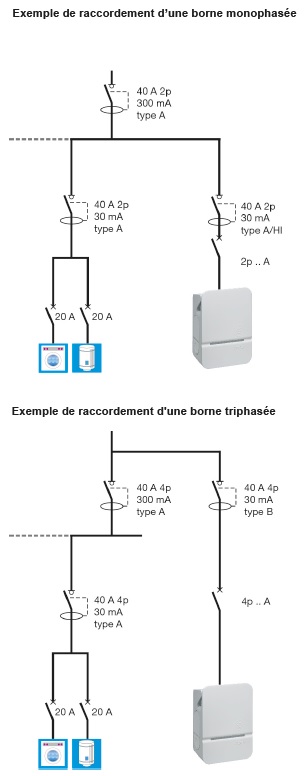- How to choose my charging station ?
- How to install a charging station
- How to use a charging station
- How choose my charging cable ?
- Which charging cable type do i need for my electric car?
- United Kingdom: OZEV EVHS grant eligibility
- Certified installers
- Partners
- Press - Learn more about Carplug
- Infos
- Contact us
- Ask quotation
- My account
- About CARPLUG
-
Language
How to install a charging station for an electric vehicle?
A IRVE certified installer
To install your charging station, the French law imposes since 2017 to appeal to a IRVE certified professional electrician (Recharge Infrastructures for Electric Vehicles). Carplug already works with a network of certified electricians, accessible here . More and more electricians are certified, and the simplest is often buying the terminal of your choice on our site , then ask the licensed electrician of your choice to install it near you.
B Checking Available Power
It is important to check the total power of your electrical installation, and to deduce the maximum power consumption during peak consumption. You will then get the available power that will power your terminal. This step is important because the terminal will surely be the element that will consume the most in your home: a terminal of 11kW is equivalent to 11 small electric heaters. If the power is insufficient, it will be necessary to ask your energy supplier an increase of this one.
Example of calculation of available power:
- Single Phase Installation: Look at the amperage of your main breaker, and multiply it by 230V. Ex: 40A x 230V = 9.2kW. Then deduce from this total the max power you consume in instantaneous. Ex: 3 electric radiators of 1kW, 1 microwave oven 1kW, 1 washing machine1kW, (lighting is negligible). So you have about 4kW left for your terminal.
- Three Phase Installation: Look at the amperage of your main breaker, and multiply it by 690 (3x230) V. Ex: 17A x 690V = 11.7kW. Then deduce from this total the max power you consume in instantaneous. Ex: 3 electric heaters of 1kW, 1 microwave oven 1kW, 1 washing machine 1kW (lighting is negligible). So you have about 7kW left for your terminal.
C Dedicated Line and Mandatory Electrical Protections
A charging station must be installed on a dedicated line, with its own breaker coupled with its own differential switch . A release with current release is additional security not required, but allows you to obtain ZE Ready certification. Below are the specifications of these elements to be in good standing:
- Single phase installation:
- Differential switch : Type A Hi, 30mA, 2P or 1P + N, 40A max
- Breaker : Min. C curve, 3kA min., 2P or 1P + N cutoff, 16 to 40A (choose 3 to 8A in addition to the rated current of the terminal)
- Current-Release Triggers : No special specifications
- Three-phase installation:
- Differential Switches : Type B, 30mA, 4P, 40A Max (One Type A is Enough , instead of type B, if the terminal is equipped with a DC leakage current detector, this is the case for terminals KEBA and ALFEN )
- Breaker : Min. C curve, 3kA min., 2P or 1P + N cutoff, 16 to 40A (choose 3 to 8A in addition to the rated current of the terminal)
- Current-Release Triggers : No special specifications
To make it easier for you to choose electrical protections, Carplug already offers packs compatible terminals and protections .
Below is an illustration of connection in both situations, in the case of a terminal HAGER Witty 2-22kW (source HAGER).
Section of connecting cables, according to French standards NF C15-100 and NF C15-722:
- Charging station 16A or plug16A, less than 100m: cable section 2.5mm²
- Charging station 32A, less than 100m: cable section 10mm²


More information is available here:
How to choose my kiosk?
How to use my kiosk?
We can help you to choose the best charging station
- Expert advice
- Lowest Prices
- Multi-brand choice
We have the trust of our customers!

Need help? Contact our technical support.
We are available from Monday to Friday from 9:00 to 18:00